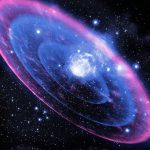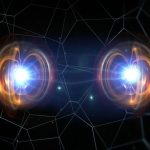Key takeaways
- NASA’s James Webb Space Telescope has uncovered an unexpected treasure trove of ancient supernovae, with ten times more of these stellar explosions spotted than previously believed.
- Some of these newly discovered supernovae erupted when the universe was just 2 billion years old, shedding light on the cosmos’ infancy and offering a glimpse into the earliest stellar deaths.
- Webb’s sensitivity allows it to detect supernovae almost everywhere it looks, offering astronomers a first step towards more extensive surveys of these cosmic events in the early universe.
- Astronomers used the phenomenon of cosmic redshift, where light from distant galaxies appears more red due to the universe’s expansion, to identify these ancient supernovae and understand their distant origins.
- These discoveries not only provide insights into the nature of supernovae in the early universe but also offer a new perspective on transient phenomena, promising exciting revelations about the cosmos’s evolution.
NASA’s James Webb Space Telescope discovered an unusual number of old supernovae.
Astronomers stated that they discovered ten times as many of these star explosions than were previously thought to exist in the early cosmos. Some of these 80-ish recently discovered supernovae detonated when the cosmos was just approximately 2 billion years old (the universe is now 13.8 billion years old), making them among the oldest ever known.
“Webb is a supernova discovery machine,” Christa DeCoursey, a third-year doctoral student at the Steward Observatory and the University of Arizona in Tucson, stated in a NASA release. “The sheer number of detections plus the great distances to these supernovae are the two most exciting outcomes from our survey.”
Supernovae are massive explosions that happen when a star dies. When a star’s core runs out of fuel, it collapses in on itself, releasing massive quantities of energy. When the parent star is massive, these supernovae frequently leave behind black holes or neutron stars, whereas smaller stars produce white dwarfs.
Astronomers conducting the JWST Advanced Deep Extragalactic Survey (JADES) discovered these new supernovae within a tiny region of sky, the size of a grain of rice held at arm’s length.
“Because Webb is so sensitive, it’s finding supernovae and other transients almost everywhere it’s pointed,” said JADES team member Eiichi Egami, a research professor at the University of Arizona in Tucson. “This is the first significant step toward more extensive surveys of supernovae with Webb.”
Astronomers discovered these ancient supernovas using a phenomenon known as cosmic redshift, in which light from distant galaxies looks more red than it should be. This happens because the universe is expanding, forcing the distance between galaxies to extend. Light stretches in such a way that it shifts toward the red end of the spectrum—because red light has a longer wavelength than blue light—so that when astronomers observe light from distant galaxies, they see this redshift, indicating that those galaxies are moving away from us as the universe expands.
“This is really our first sample of what the high-redshift universe looks like for transient science,” Justin Pierel, a NASA Einstein Fellow at the Space Telescope research Institute (STScI) in Baltimore, Maryland, said in the release. “We are trying to identify whether distant supernovae are fundamentally different from or very much like what we see in the nearby universe.”

Astronomers from the JADES program reported the JWST’s discovery of these 80 new supernovae during a press briefing during the American Astronomical Society’s 244th meeting in Madison, Wisconsin. Prior to the deployment of the JWST, only a few supernovae were identified to have a redshift value that matched to having existed when the universe was younger than roughly 3.3 billion years.
One of the newly discovered supernovae detonated when the universe was just 1.8 billion years old, making it the most distant and hence oldest yet detected.
Astronomers are particularly interested in Type Ia supernovae, which have a predicted, extreme brightness. This implies they can be used to compute the universe’s expansion rate via redshift. In this latest discovery, scientists uncovered at least one Type Ia supernova that occurred when the universe was 2.3 billion years old, making it the earliest known Type Ia supernova. This might help scientists determine if the brightness of these supernovae varies with redshift, affecting their capacity to be credible predictions of the universe’s expansion pace.
These discoveries may also help astronomers understand how supernovae in the early universe differed from those today and how this influenced the development of early stars and planets.
“We’re essentially opening a new window on the transient universe,” STScI Fellow Matthew Siebert, who led the spectroscopic examination of the JADES supernovae, said in a release. “Historically, whenever we’ve done that, we’ve found extremely exciting things — things that we didn’t expect.”


